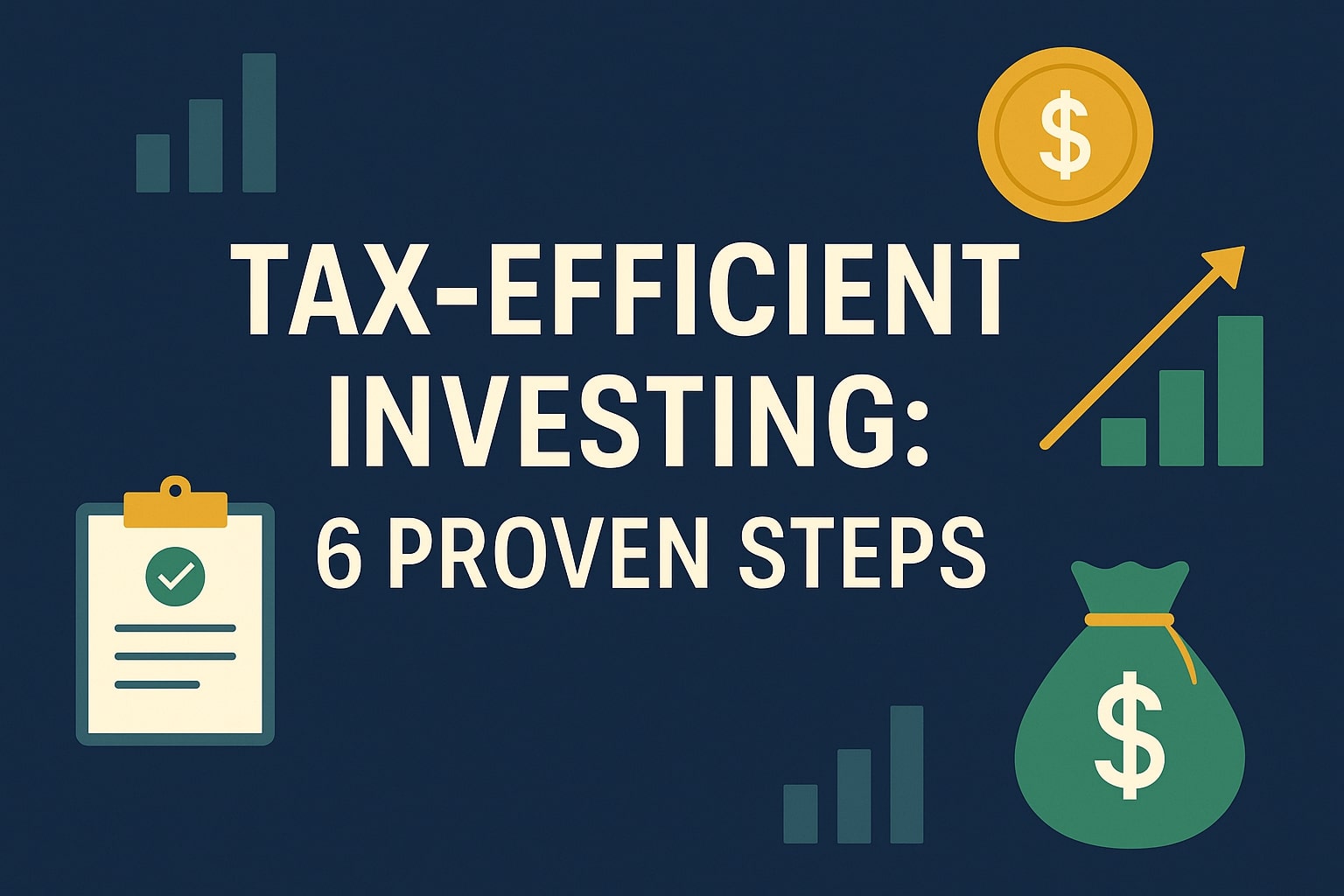The Complete Guide to Tax-Efficient Investing: 6 Proven Steps for Smarter Wealth Growth
By WB Loo | 2025-09-29
This page may contain some affiliate links. This means that, at no additional cost to you, Alpha Investing Group will earn a commission if you click through and make a purchase. Learn more

Even savvy investors can watch their hard-earned gains quietly leak away — taxes are the stealthy drain on your wealth.
Without a deliberate strategy, that slow erosion can sharply cut into your long-term returns, no matter how disciplined your investing. The so-called “tax drag”—the difference between before‑tax and after‑tax returns — can be larger than the fund’s expense ratio, chipping away at a meaningful chunk of growth. In fact, Schwab’s research notes that even modest tax losses, when compounded over time, can significantly reduce your portfolio’s overall performance. That’s why it matters to think beyond headline returns and ask: how much of that growth are you actually keeping? Because the difference between a good return and a great one often comes down to how tax-smart your moves are.
Follow this six-step guide to tax-efficient investing — and stop letting taxes stealthily shrink your wealth.
1. Prioritise Tax-Advantaged Accounts
Begin by prioritising contributions to accounts like ISAs, SIPPs, or other retirement vehicles before investing in taxable platforms.
These accounts offer tax-deferral or tax-free growth, shielding potential gains from immediate tax hits. Because keeping your investments sheltered from taxes — even for just a few years — allows compounding to work its magic more quietly and powerfully. So, loading up on tax‑advantaged space is more than smart — it’s foundational.
Miss this step, and you’re effectively volunteering part of your future returns to the tax office.
2. Think Long-Term to Pay Less Tax
Patience is more than a virtue — it’s a tax strategy.
Long-term holdings typically enjoy preferential capital gains rates, compared with short-term trades taxed at higher income rates. The U.S. Congressional Research Service found that long-term capital gains tax rates can be almost half the short-term rate. That gap directly boosts your after-tax returns.
In practice, the longer you hold, the more of your wealth stays invested rather than siphoned off.
3. Right Assets, Right Account
Think of your various investment accounts like different rooms in a house — each needs the right décor to shine.
Putting income-generating or turnover-heavy assets, such as bond funds or active mutual funds, into tax-protected accounts and tax-efficient funds, such as index funds and ETFs, into taxable ones maximises. Fidelity explains this “asset location” strategy can stack the odds in your favour by nudging your after-tax return even higher. Strategic placement of assets isn’t flashy — it’s quietly impactful.
If your goal is smarter wealth growth, this alignment helps your portfolio work tax‑smart, not just market‑smart.
4. Turn Losses into Tax Savings
Every dip in your portfolio could be a hidden opportunity — one that lets you turn bad days into better tax months.
By selling losing positions, you create offsetting losses that can reduce your taxable gains — or even offset up to £3,000 or more of income in some systems. That’s cash staying in your pocket, not in a tax bill. BNY Mellon notes that unused losses can carry forward indefinitely, building a bank of tax relief for future years. So, those moments when your portfolio stumbles aren’t losses—they can be tactical plays.
Instead of fearing red days, you’ll learn to see them as opportunities hidden in plain sight.
5. Rebalance Strategically to Protect Returns
When your portfolio drifts off balance, rebalancing doesn’t have to cost you in taxes — if done the right way.
Instead of triggering taxable sales, you can rebalance by steering fresh money or dividends toward underweight areas, particularly within tax‑advantaged accounts. That way, you realign your portfolio without forcing taxable events — keeping both your risk profile and your tax bill in check. Smart rebalancing means you reset your portfolio — not your tax savings.
It’s not just about staying balanced — it’s about staying balanced and untaxed.
In A Tiny Nutshell…
Too many investors focus on chasing returns while ignoring the silent bite of taxes. Yet over time, that drag can cost more than management fees or even poor timing in the market. The real edge lies not just in what you earn, but in what you keep.
Tax efficiency isn’t a side strategy — it’s a core discipline.
Master it, and you tilt the game permanently in your favour.
